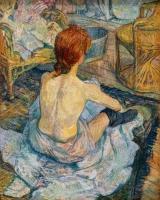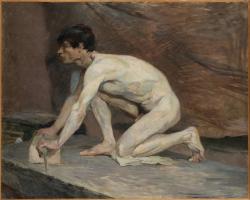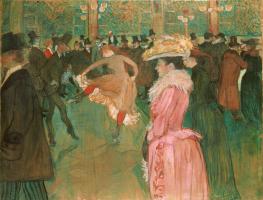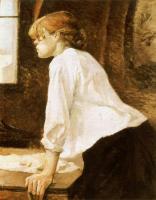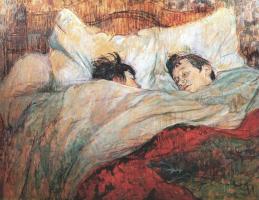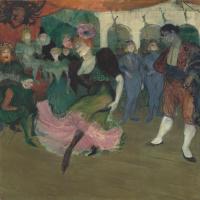Henri de Toulouse-Lautrec
Henri de Toulouse-Lautrec was the son of a French aristocrat. As the result of two accidents as a boy, in which he broke first one leg and then the other, he was crippled for life: his legs never grew normally, and he became a grotesque figure with the body of an adult and the legs of a child. He began to paint during the periods of convalescence from his accidents, and went on to study art in Paris. His physical disability had had a psychological effect on him too, and he led a decadent life, seeking the company of people who would accept him without discomfort. He mixed with singers, dancers and prostitutes, entertainers of the music hall, the circus and the cabaret with whom he felt at ease. These people and other artists formed the subject matter of his art.
He had an infallible eye for design, a gift for conveying movement and atmosphere in a few rapid strokes, and he recorded what he saw without implication of any kind.
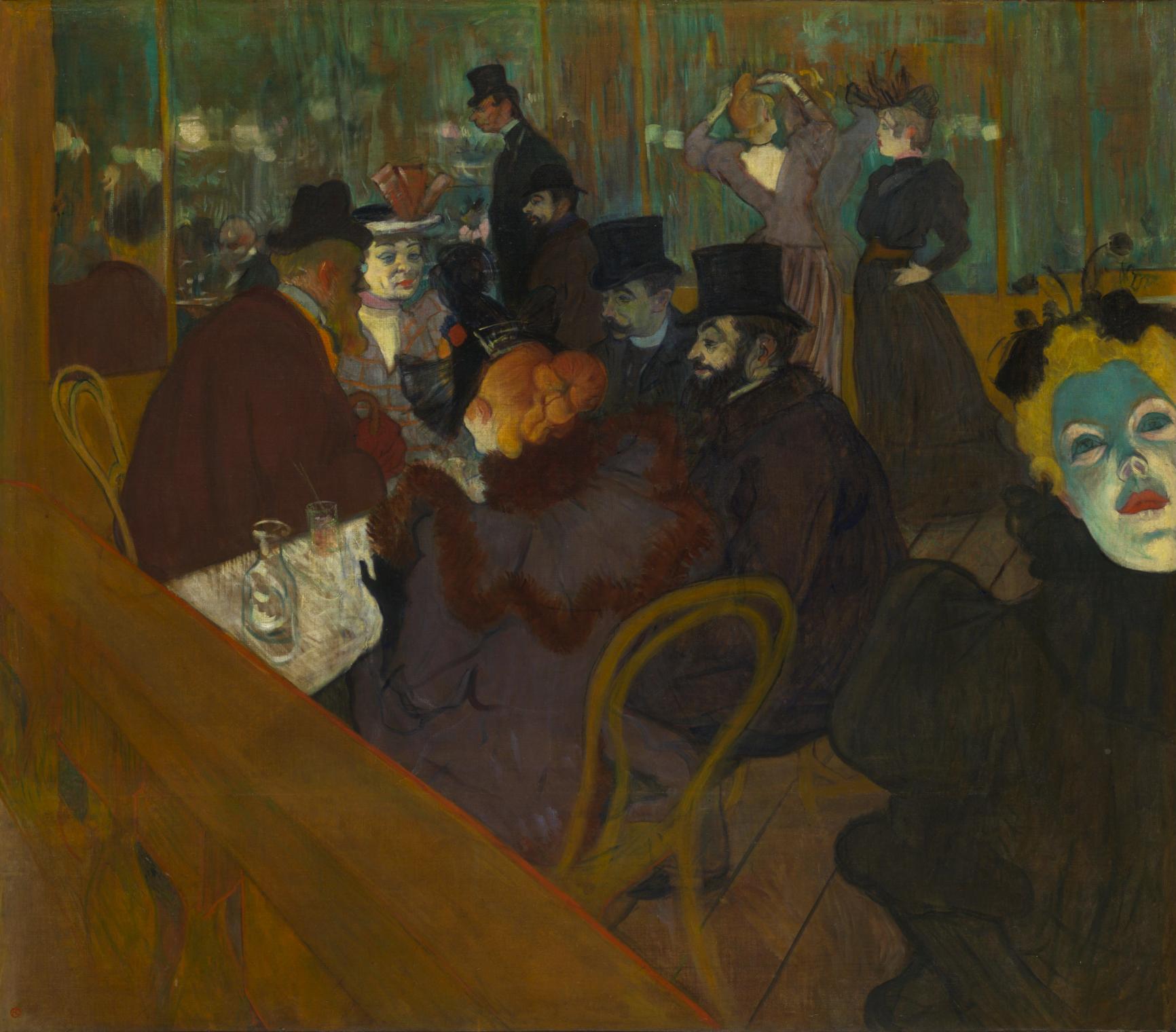 At the Moulin Rouge shows his world, unique and full of gossip. The Moulin
Rouge (where the can-can was made famous) was a music hall at the centre of
Bohemian life in Montmartre, and Toulouse-Lautrec, initially through the medium
of posters, made many of its stars immortal, and made his name as a painter.
At the Moulin Rouge shows his world, unique and full of gossip. The Moulin
Rouge (where the can-can was made famous) was a music hall at the centre of
Bohemian life in Montmartre, and Toulouse-Lautrec, initially through the medium
of posters, made many of its stars immortal, and made his name as a painter.
The inhabitants of the room are arranged in an apparently accidental way, but the painting is in fact made up of precise diagonals formed by the table, the balustrade on the left and the planks on the floor. The brilliant hennaed hair of the woman with her back to us is echoed throughout the composition, so that colour as well as line unifies the picture; she also provides a striking focal point.
In the foreground a woman stares out at us, her face mask-like under heavy makeup. She is only partially visible, as if her movement has been caught as it would be in a photograph. Lautrec’s friends sit drinking absinthe (a powerful liqueur which was popular in their circle) and talking at the table in the centre. Amongst them is the Spanish dancer La Macarona, her bright red lips in a rather jaded smile. The artist himself can be seen at the back, his top hat barely reaching the shoulder of his cousin next to him; to the right a famous dancer at the Moulin Rouge known as La Goulue (The Glutton) arranges her hair.
There is a feeling of continuous activity, as if the artist actually is part of the scene he has painted, and the movement in the picture is going on all around him. Mirrors reflect the crowded, smoky, slightly out-of-focus haze of the room, accentuating the life and the atmosphere of the place which Lautrec has caught vividly.


